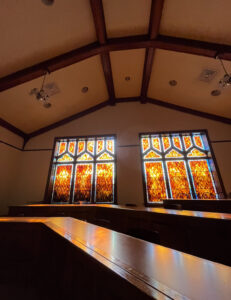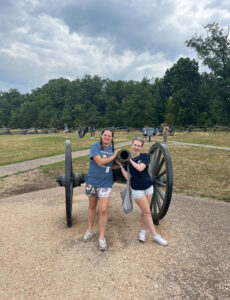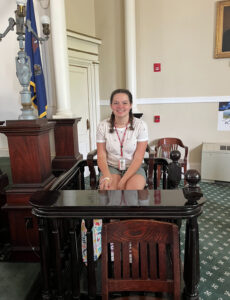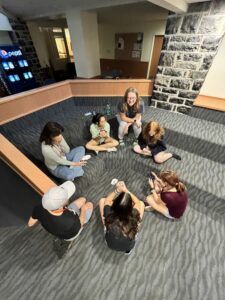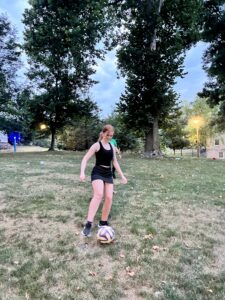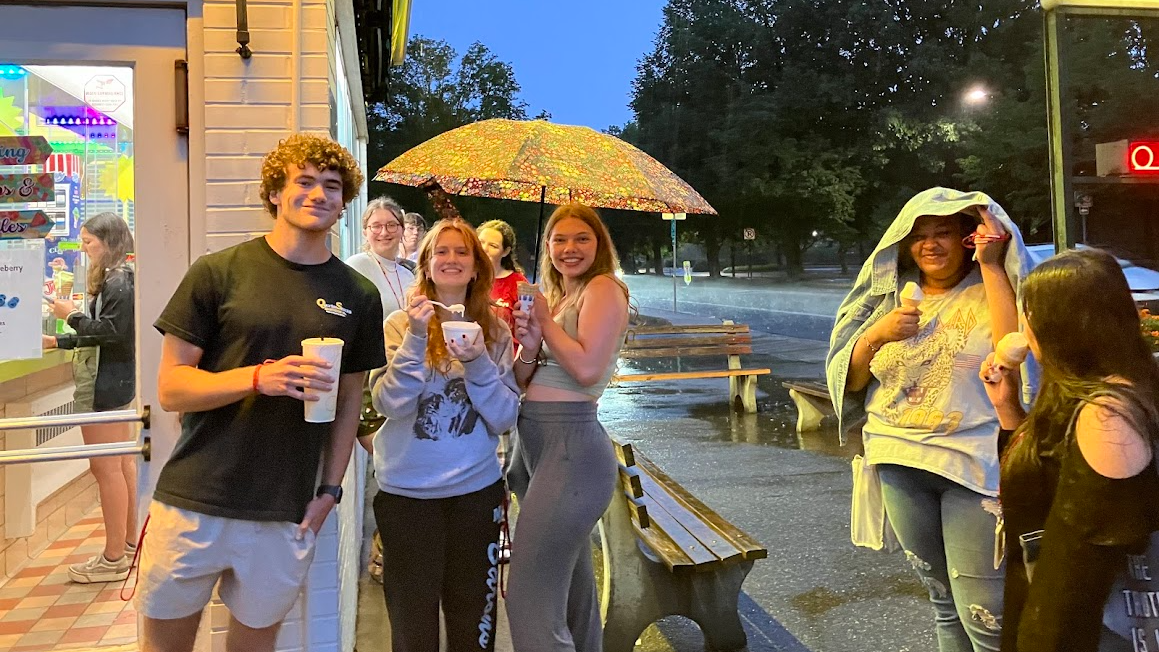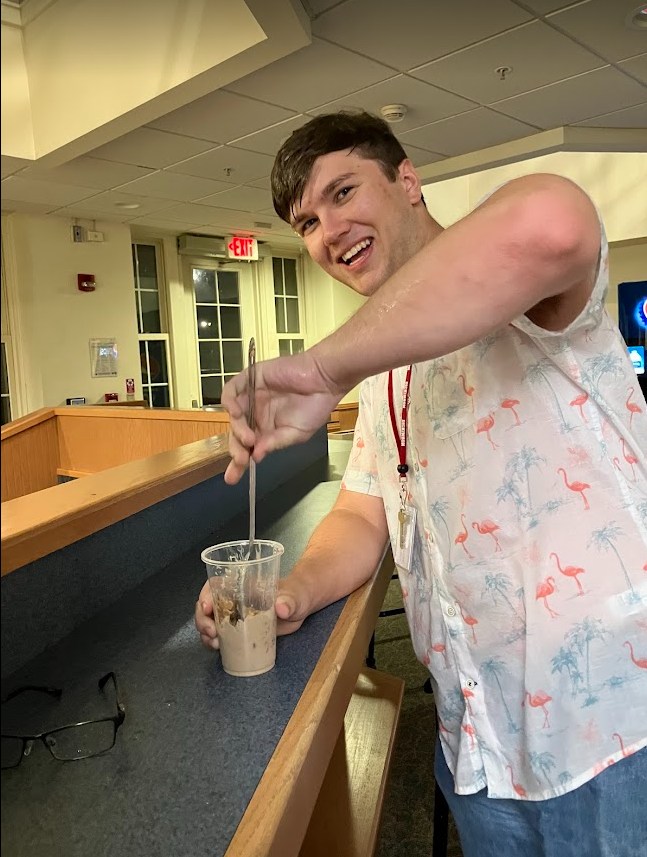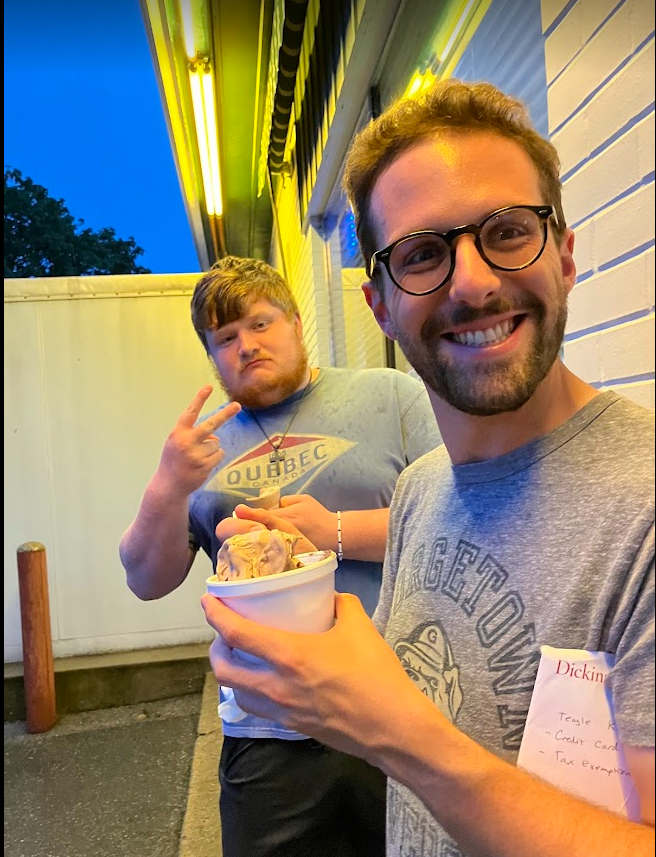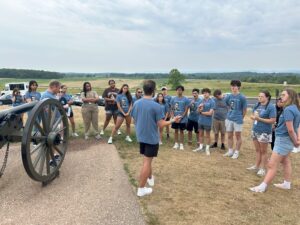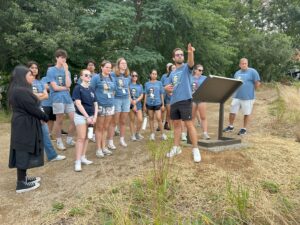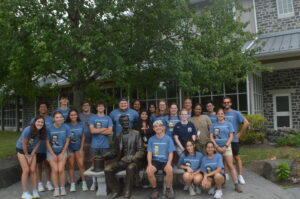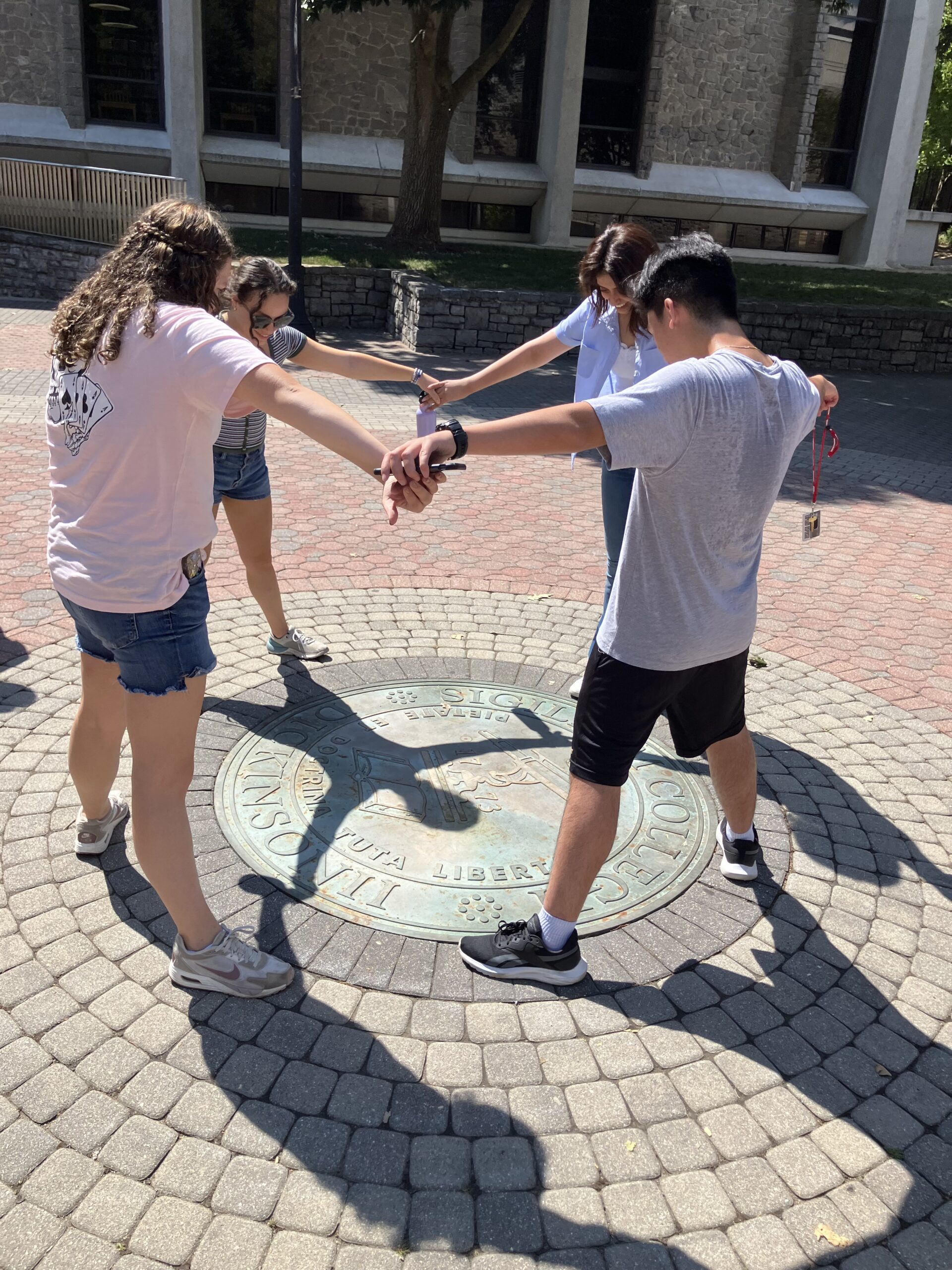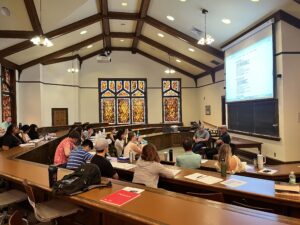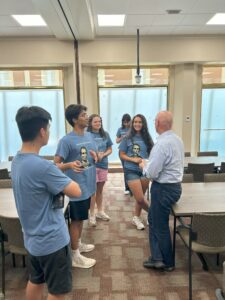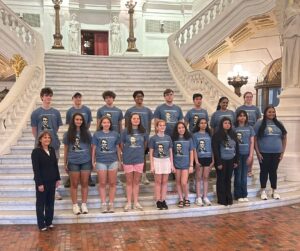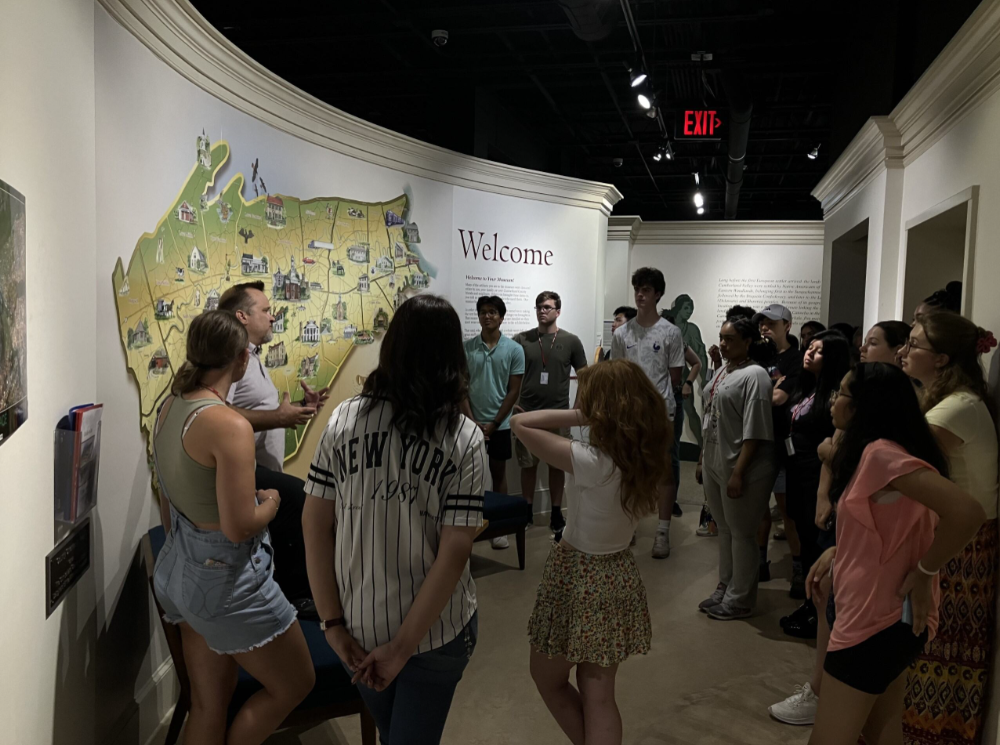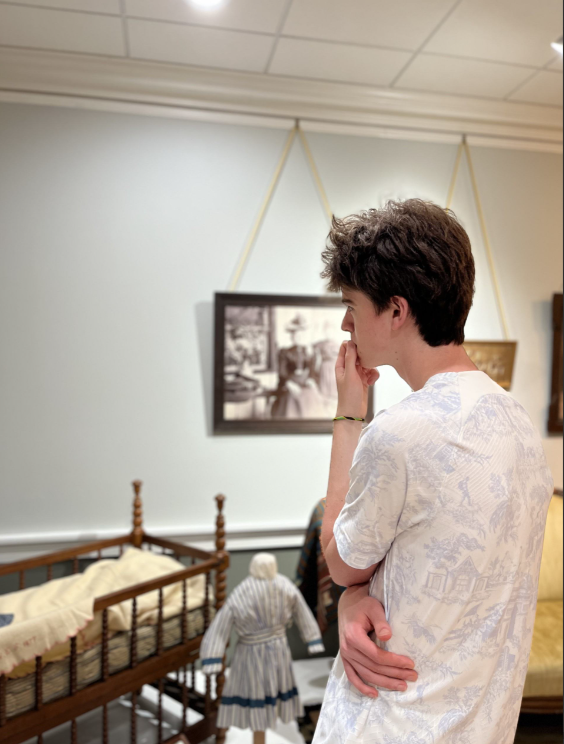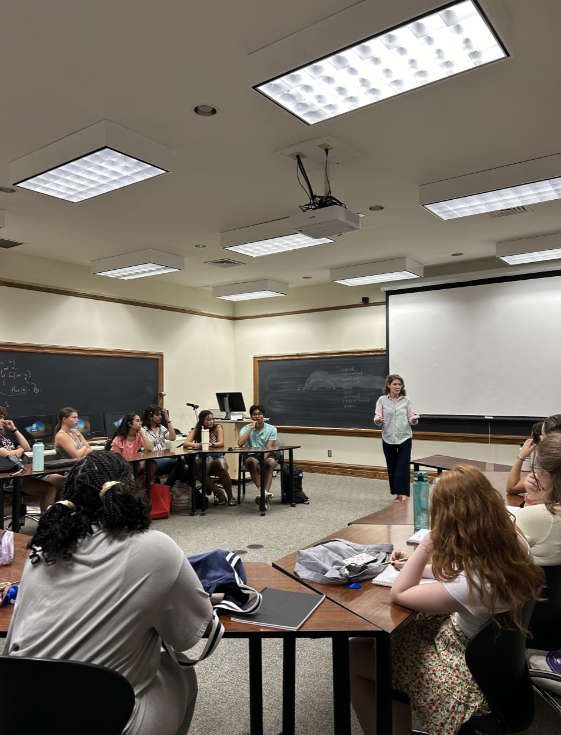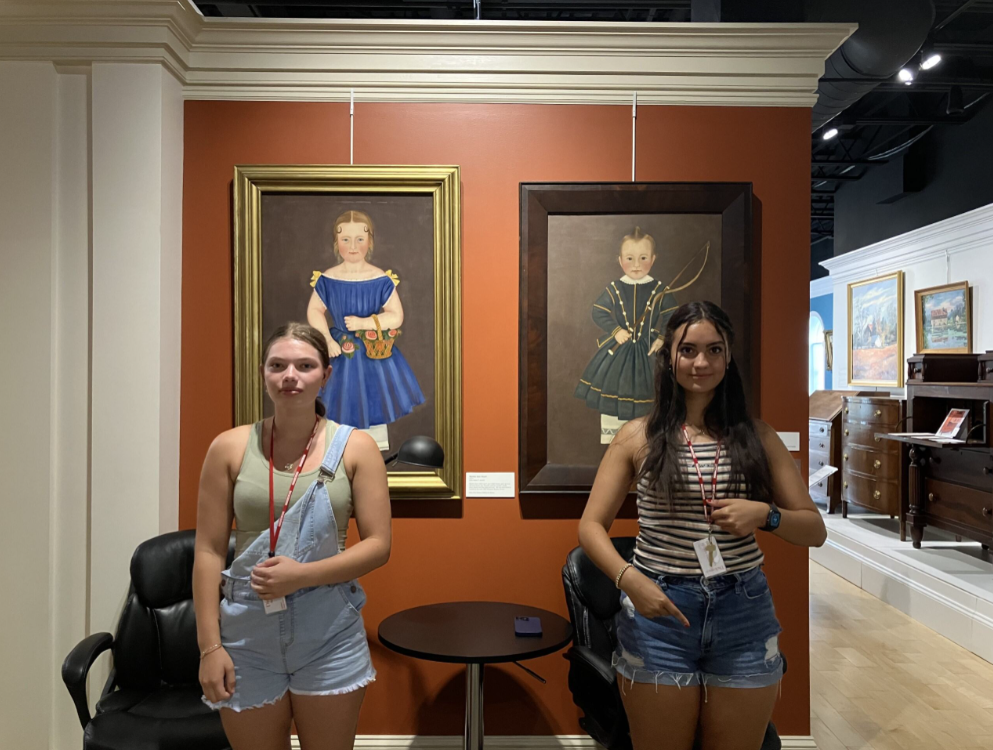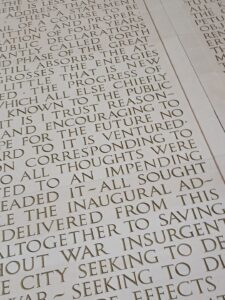
Lincoln’s Second Inaugural Address
On July 24 we rose, bright and early, at 7:30am to board our giant tour bus. (We slept on the ride.) We set off for Washington D.C., and a couple hours later, there we were—right in front of the Lincoln Memorial.
The shining marble towered above the bland surroundings. The luscious texts—Lincoln’s latest version of the Gettysburg Address and his Second Inaugural Address—were deeply etched into the wall. Professor Pinsker asked us to find the fixed mistake in Lincoln’s Second Inaugural; there is a word “FUTURE” with a grayed out rung beneath the top two rungs of the letter F. It turns out that F was once an E!
Next, we visited Martin Luther King Jr.’s Memorial. Very beautiful as well, King stands
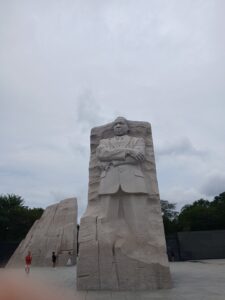
Martin Luther King Jr.’s Memorial
jutting out of a stone pillar—a symbol of his stone of hope carved from a mountain of despair—and is surrounded by thin waterfalls that line the wall of the entrance.
It is also next to a lake in which a duck was chilling. We said hi to the duck!
Next we ate our scrumptious lunch and ventured to the National Archives, where we found the actual paper copies of the Declaration of Independence, the Bill of Rights, and the Constitution! We then went to the National Museum of African American History and Culture, where we split into groups, and ventured into the amazing building!
It had four levels, plus a lower level called the Concourse, which splits into a massive variety of little levels, passageways, rooms, and exhibits. It was amazing, the level of atmosphere and detail that had been put in. One of our TAs actually told me that the Museum is built from the bottom up to chronologically progress more into the modern day as you move up the building. That is why the lower levels have rooms that are meant to make you feel how it was like to be on a slave ship on a transatlantic voyage, whereas the top floor explores African-American influence in modern-day pop culture. Some of the facts within the museum—especially the ones about slavery and racial segregation—are horrifying. For example, slaves on the first sugar plantations had an average life expectancy of seven years, suffering from mortality rates of 30 percent! The museum does a good job of showcasing the horrible injustices and hardships African-Americans have gone through over the history of the United States.
Next we went to a statue in Lincoln Park, called the Emancipation Memorial. It shows a picture of Abraham Lincoln gesturing toward a kneeling black man, who appears to have broken from his chains. This commemorates Lincoln’s Emancipation Proclamation. We discussed the implications of this statue as well as the statue on the other side of the park, a statue of Mary McLeod Bethune, a famous educator who advocated for civil rights and greater gender and racial equality. Four different U.S. presidents had her as an advisor. We discussed whether 19th-century abolitionist Frederick Douglass would have liked the memorial, as he did say that there should be another monument built to complement the Emancipation Memorial.
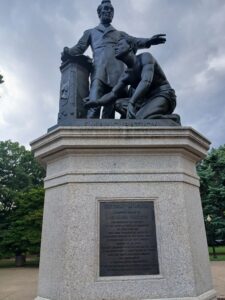
The Emancipation Memorial
Finally, we went to a great restaurant and rode home, getting back at around 9:30pm and actually having hours of relax time remaining!
As someone who has never been to Washington D.C. before, I was truly grateful to be in such a historically significant, famous place, with many beautiful sights to see and facts to learn—all while being in D.C. at the same time as Prime Minister Netanyahu!

the duck

